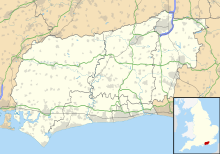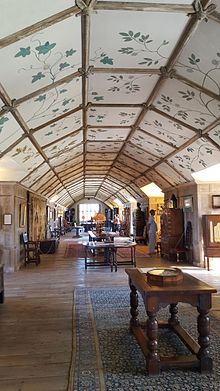
Baron Zouche is a title which has been created three times, all in the Peerage of England.

Sir Francis Godschall Johnson was a Canadian office holder. He was appointed Lieutenant Governor of Manitoba on April 9, 1872, but had his commission revoked before he was sworn in. In 1889, he was appointed the 4th chief justice of the Superior Court of Quebec.

Fawsley is a hamlet and civil parish in West Northamptonshire, England. The population at the 2001 census was 32. At the 2011 census the population remained less than 100 and is included in the civil parish of Charwelton.
John George Pearson was an English novelist and an author of biographies, notably of Ian Fleming, of the Sitwells, and of the Kray twins.

Bramshill House, in Bramshill, northeast Hampshire, England, is one of the largest and most important Jacobean prodigy house mansions in England. It was built in the early 17th century by the 11th Baron Zouche of Harringworth but was partly destroyed by fire a few years later. The design shows the influence of the Italian Renaissance, which became popular in England during the late 16th century. The house was designated a Grade I listed building in 1952.

The Frankland Baronetcy, of Thirkelby in the County of York, is a title in the Baronetage of England, created on 24 December 1660 for William Frankland. He later represented Thirsk in Parliament.
The Bishopp Baronetcy, of Parham in the County of Sussex, was a baronetcy in the Baronetage of England. From around 1780 the name was sometimes also spelled Bisshopp. It was created 24 July 1620 for Sir Thomas Bishopp who had previously represented Gatton in Parliament. He was by then almost 70 years old and who had earlier been created a knight by King James I on 7 May 1603 at Theobalds, shortly after James's accession to the throne. Thomas Bishopp was the son of Thomas Bishopp and Elizabeth Belknap, heir and daughter of Sir Edward Belknap, who was active in the service of the English crown, both on the battlefield and as a court official.
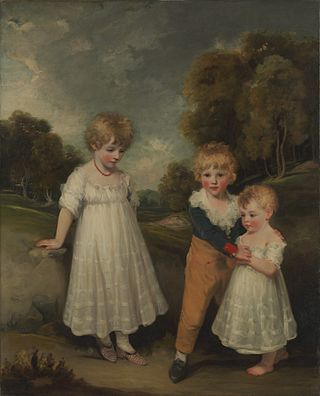
Elizabeth Sackville-West, Countess De La Warr and 1st Baroness Buckhurst, was a British peeress.
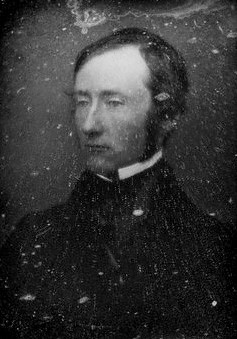
Robert Curzon, 14th Baron Zouche, styled The Honourable Robert Curzon between 1829 and 1870, was an English traveller, diplomat and author, active in the Near East. He was responsible for acquiring several important and late Biblical manuscripts from Eastern Orthodox monasteries.
The list of known High Sheriffs of Surrey extends back to 1066. At various times the High Sheriff of Surrey was also High Sheriff of Sussex.
The Hawkhurst Gang was a notorious criminal organisation involved in smuggling throughout southeast England from 1735 until 1749. One of the more infamous gangs of the early 18th century, they extended their influence from Hawkhurst, their base in Kent, along the South coast, to Dorset, where they successfully raided the customs house at Poole. After they were defeated in a battle with the Goudhurst militia in 1747, three of their leaders, Thomas Kingsmill, Arthur Gray and William Fairall were executed in 1748 and 1749.

Juniper Hall FSC Field Centre is an 18th-century country house, leased from the National Trust, on the east slopes of Mickleham in the deep Mole Gap of the North Downs in Surrey, England. The varying contours of the slopes provide habitats and environments for study including unimproved chalk grassland, coppiced woodlands, heathland and freshwater.

Culham Manor is a historic manor house in Culham, near Abingdon in southern Oxfordshire, England.

The Honourable Robert Curzon, of Parham Park, Sussex, was a long-standing British Member of Parliament.
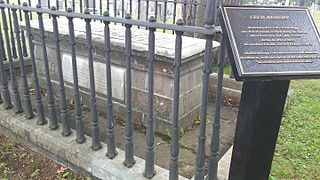
Lieutenant-Colonel Cecil Bisshopp was a British army officer and onetime Member of the Parliament of the United Kingdom who came to Canada in 1812 and died in the War of 1812.
Sir Edward Bishopp, 2nd Baronet was an English politician who sat in the House of Commons in 1626 and in 1640. He supported the Royalist cause in the English Civil War.
Sir Thomas Bishopp, 1st Baronet (1550–1626), also spelt Bishop and Bisshopp, was an English politician.
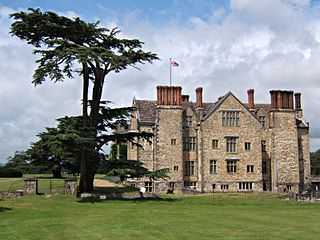
Cecil Bisshopp, 12th Baron Zouche, FRS was a Member of Parliament for New Shoreham who afterwards became the 12th Baron Zouche.
Sir Cecil Bisshopp, 6th Baronet Bisshopp, was a British politician. He succeeded to the title of 6th Baronet Bishopp, of Parham, co. Sussex on 25 October 1725. He was Member of Parliament for Penryn between 1727 and 1734, having been returned unopposed on the interest of the Boscawen family into which he had married. He also represented Boroughbridge between 1755 and 1768. He married Hon. Anne Boscawen, daughter of Hugh Boscawen, 1st Viscount Falmouth and Charlotte Godfrey, in 1726. In addition to Parham Park, Sussex he was also the owner of a house at 11 Berkeley Square, London which Horace Walpole purchased from Bisshopp's heirs in 1779 and in which Walpole lived until he died there in 1797. Sir Cecil died on 15 June 1778 at the age of 77.
Edward John Sidney Christian Welbore Ellis Agar, 5th Earl of Normanton was a British and Irish peer, soldier, and landowner, a member of the House of Lords from 1933 until his death.

